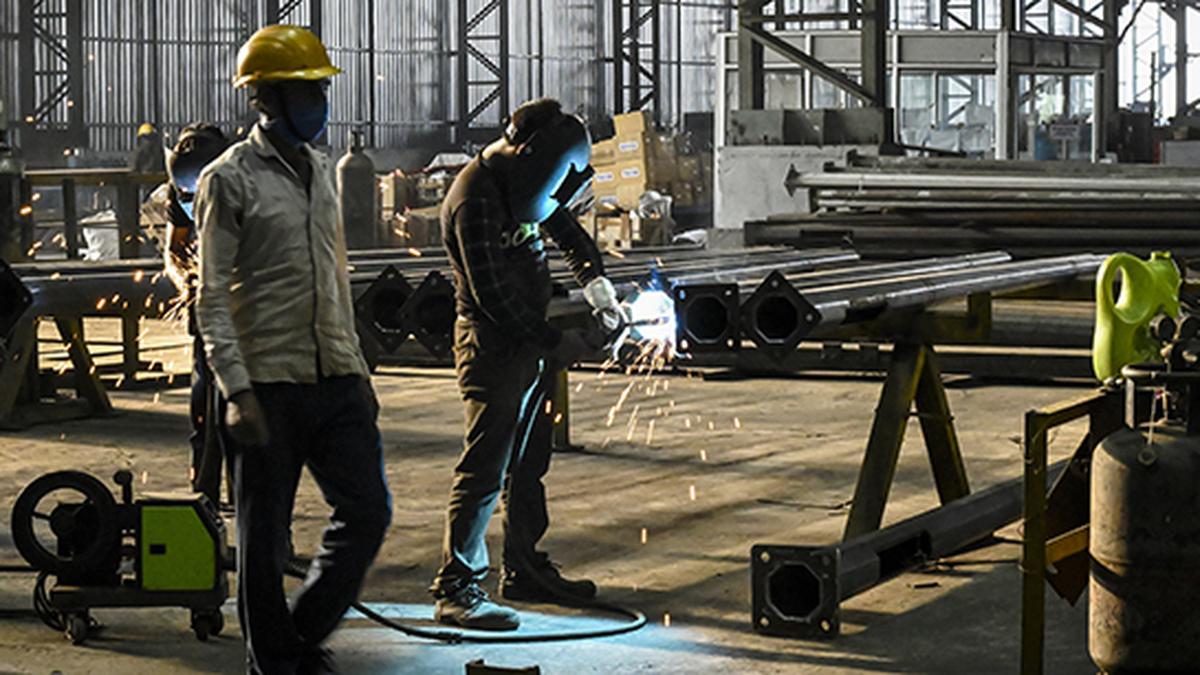Is the private sector revving up?
It has been pointed out that first quarter growth of gross domestic product, at 6.7 per cent, points to a pick-up in private investment, amidst a contraction in government spending. The former is debatable. Here are some contrary pointers.
Corporate results for 1QFY25 (RBI) show value added by the non-government non-finance sector decelerating to 8.5 per cent from 9.3 per cent in 4QFY24. Thus, in real terms, the GVA for the formal sector decelerated by 200 basis points (bps) to 7.4 per cent.
However, real gross fixed capital formation (GFCF) accelerated to 7.5 per cent from 6.5 per cent in 4QFY24. The pickup in real GFCF growth contrasts with the 35 per cent year-on-year (y-o-y) contraction in Central government capital allocation during 1QFY25. This contrast has been interpreted as a sign of an eventual revival of the private capex cycle.
Assuming government capex at 15 per cent of total capex (States + Centre) and its contraction by 20 per cent in real terms during 1QFY25 (CGA data y-o-y), the implied growth in non-government capex works out to 15 per cent in real terms. If this is indeed correct, it would be a major shift from the past 10 years’ trend. It is unlikely, given lack of any perceptible trend shift on the demand side.
Reflecting the prolonged feebleness, real investments in plants and machinery contracted by 0.3 per cent during FY19-FY23 (four-year CAGR) compared to an expansion of 8.7 per cent in the pre-Covid period. Within this, private spending slowed to 1.9 per cent from the pre-Covid average of 4.6 per cent.
The financial summary of non-finance companies (CMIE) shows that net fixed assets grew by 6 per cent in FY24, implying a real growth of 5 per cent, much less than 9 per cent growth in overall real GFCF.
Given that the crowding-in effect of government capex on private sector non-infra investments remained muted over the past 10 years, it is improbable that it would have suddenly surged in just one quarter.
A panel of high-frequency data on India’s investment cycle was mixed in 1QFY25. Here are how some key variables moved in 1QFY25 over 4QFY24: (a) In 1Q, IIP for capital goods decelerated to 2.7 per cent from 4.2 per cent; (b) Imports of electrical and non-electrical machinery contracted in 1Q; (c) deceleration in bank lending growth to industries, construction and infrastructure sectors; (d) RBI’s survey of the infrastructure sector shows weakening optimism over the business situation; (e) Freight movement in ports and railways decelerate; (f) Contractions in new projects (CMIE) announced (-84.5 per cent y-o-y) and completed (-57.8 per cent); and (g) on the positive side, commercial vehicle sales grew by 9.8 per cent after contracting by 6.5 per cent in 4QFY24.
Given the moderation in sales growth and weak demand, private companies are focused on protecting margins by conserving spending on both raw materials and manpower.
Hence, it is unlikely that they would indulge in aggressive capex when capex is contracted by governments and public sector units.
Intensifying trade protectionism has prompted China to dump goods worldwide at lower price realisation. It is also impacting margins and volumes across Indian industries.
Sectors such as metals, petrochemicals, organic chemicals, engineering goods, electronic goods, non-electrical machinery, batteries, electrical vehicles, and tyres are particularly vulnerable.
Overall, it will be premature to extrapolate the outsized rebound in household consumption and private capex in 1QFY25 as replacing the infra-centric boom funded by government capex over the past several years.
As the adjoining table points out, production and credit parameters do not entirely support the argument that private investment is picking up.
The writer is is Co-Head of Equities & Head of Research – Strategy & Economics, Systematix Group. Views are personal
